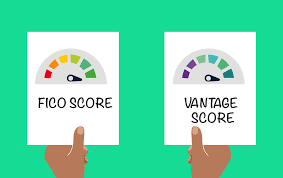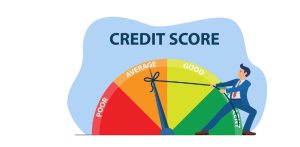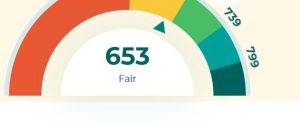In the complex world of personal finance, few metrics are as powerful yet mysterious as credit scores. These three-digit numbers can make or break your financial opportunities, determining everything from loan approvals to interest rates.
At the heart of this financial ecosystem lies an important comparison: FICO vs VantageScore. This comprehensive guide will unravel the intricacies of these credit scoring models, empowering you with the knowledge to take control of your financial health.
Table of Contents
Understanding Credit Scores: The Basics
Credit scores are more than just numbers—they’re financial fingerprints that tell a story about your monetary reliability.
These numerical representations provide lenders with a quick, objective assessment of your creditworthiness, condensing years of financial behavior into a single, powerful metric.
Key points about credit scores include:
- A standardized method to evaluate financial risk
- Used by lenders to make quick credit decisions
- Reflect your historical financial responsibility
- Impact loan approvals, interest rates, and credit limits
- Calculated using complex algorithms and historical financial data
Think of a credit score as your financial reputation. Just as a job reference speaks to your professional reliability, a credit score speaks to your financial trustworthiness.
Lenders use these scores to predict the likelihood of you repaying borrowed money, making them a crucial tool in financial decision-making.
What is FICO Score?
The FICO score, created by the Fair Isaac Corporation in 1989, has long been the standard in credit scoring. When people discuss FICO vs VantageScore, FICO is often the benchmark against which other scoring models are compared.
Key points about FICO scores:
- Developed by Fair Isaac Corporation
- Most widely used credit scoring model
- Range from 300 to 850
- Used by approximately 90% of top lenders
- Multiple versions exist for different industries
FICO Score Composition Table
| Component | Weight | Description |
| Payment History | 35% | Timely payments, late payments, defaults |
| Credit Utilization | 30% | Amount of credit used vs. available credit |
| Credit History Length | 15% | Age of oldest and newest accounts |
| Credit Mix | 10% | Types of credit accounts |
| New Credit | 10% | Recent credit inquiries |
The FICO score is meticulously designed to provide a comprehensive view of your credit risk. Each component plays a crucial role in determining your overall score, with payment history and credit utilization carrying the most significant weight.
What is VantageScore?
Developed as a collaborative effort by the three major credit bureaus—Equifax, Experian, and TransUnion—VantageScore emerged as a competitive alternative in the FICO vs VantageScore landscape.
It aims to provide a more inclusive and nuanced approach to credit scoring.
Key points about VantageScore:
- Created by the three major credit bureaus
- More inclusive scoring model
- Range from 300 to 850 (similar to FICO)
- Considers alternative data sources
- Gaining popularity among lenders
VantageScore Composition Table
| Component | Description | Influence |
| Total Credit Usage | Credit utilization | High |
| Credit Mix and Experience | Types and age of accounts | Moderate |
| Payment History | Consistency of payments | Extremely High |
| Age of Credit History | Length of credit accounts | Moderate |
| New Accounts | Recent credit activities | Low |
While similar to FICO, VantageScore differentiates itself by being more flexible in its approach, particularly for consumers with limited credit history.
Key Differences Between FICO and VantageScore
The FICO vs VantageScore debate isn’t about which is inherently better, but understanding their unique characteristics. Here are critical distinctions:
Key comparison points:
- Scoring methodology variations
- Treatment of credit utilization
- Approach to new credit accounts
- Handling of collections and paid collections
- Depth of data analysis
One significant difference is how each model treats recent credit behaviors. FICO tends to be more conservative, while VantageScore offers a more dynamic assessment of creditworthiness.
How to Improve Both FICO and VantageScore
Despite their differences, both FICO and VantageScore reward similar financial behaviors.
Here are universal strategies to improve your credit scores:
Actionable improvement strategies:
- Make all payments on time, every time
- Keep credit utilization below 30%
- Maintain a diverse credit mix
- Avoid opening too many new credit accounts
- Keep old credit accounts open
- Regularly monitor your credit reports
- Dispute any inaccuracies you find
Consistency is key. Think of improving your credit score as a marathon, not a sprint. Small, persistent actions compound over time to create significant improvements.
Which Score Matters More?
In the FICO vs VantageScore debate, the answer isn’t straightforward. Different lenders prefer different models:
- Mortgage lenders typically use FICO scores
- Credit card companies might use VantageScore
- Auto loan providers have specific scoring preferences
- Personal loan vendors may use either or both
The most important factor is maintaining good financial habits across both scoring models.
Understanding Your Credit Report
Your credit report is the foundation of your credit score. It’s a detailed record of your credit history, containing:
- Personal identification information
- Credit account details
- Payment history
- Public records
- Recent credit inquiries
Tips for reviewing your credit report:
- Request free reports annually from each credit bureau
- Check for accuracy and completeness
- Look for potential identity theft indicators
- Dispute any incorrect information immediately
Common Myths and Misconceptions
Separating fact from fiction in credit scoring:
- Myth: Checking your credit score hurts your credit
- Fact: Soft inquiries do not impact your score
- Myth: You only have one credit score
- Fact: Multiple scoring models exist
- Myth: Income directly affects credit score
- Fact: Credit score is based on credit behavior, not income
Conclusion
Understanding the nuances of FICO vs VantageScore empowers consumers to make informed financial decisions. While the models have differences, the fundamental principle remains the same: responsible credit management is the key to financial success.
Skale Money Key Takeaways
- FICO and VantageScore are complementary credit scoring models
- Both scores consider similar factors with varying weights
- Consistent financial behavior improves both scores
- Regular monitoring is crucial for credit health
Frequently Asked Questions (FAQ)
Can I have different FICO and VantageScore scores?
Yes, it’s common to have variations due to different calculation methods.
How often do credit scores update?
Typically monthly, but this can vary by credit bureau and lender.
Does checking my own credit scores hurt my credit?
No, soft inquiries do not negatively impact your credit score.
Which score do most lenders use?
FICO scores are still more widely used, especially in mortgage and auto lending.
Q5: How long do negative items stay on my credit report?
Most negative items remain for 7 years, with some exceptions like bankruptcies.
By demystifying the FICO vs VantageScore landscape, you’re now equipped with the knowledge to navigate the credit scoring world confidently. Remember, your credit score is not just a number—it’s a powerful tool for financial freedom.
![]()




